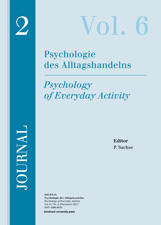Zwecks genauerer Klärung zitiere ich mal das Abstract der auf Klicksafe verlinkten, in Science Advances erschienenen Studie:
“Fake news,” broadly defined as false or misleading information masquerading as legitimate news, is frequently asserted to be pervasive online with serious consequences for democracy. Using a unique multimode dataset that comprises a nationally representative sample of mobile, desktop, and television consumption, we refute this conventional wisdom on three levels. First, news consumption of any sort is heavily outweighed by other forms of media consumption, comprising at most 14.2% of Americans’ daily media diets. Second, to the extent that Americans do consume news, it is overwhelmingly from television, which accounts for roughly five times as much as news consumption as online. Third, fake news comprises only 0.15% of Americans’ daily media diet. Our results suggest that the origins of public misinformedness and polarization are more likely to lie in the content of ordinary news or the avoidance of news altogether as they are in overt fakery.
Das Vermeiden von Nachrichten und der Konsum gewöhnlicher Nachrichten tragen demnach also mehr zur Fehlinformiertheit und Polarisierung bei als Fake News.
Es wird dabei schon ein sehr breites Verständnis von Fake News zugrunde gelegt:
We emphasize here that both our definition of news and fake news are extremely broad. In the case of news, we include, for example, morning shows and portals, while our definition of fake news includes highly biased and hyperpartisan news sites such as Breitbart.com i.e., corresponding to the “red” and “orange” categories defined in (8)] and outright fraudulent sites (i.e., the “black” category). Our estimates of the prevalence of news and fake news therefore likely overstate the true prevalence, although we also find that adopting stricter definitions makes no discernable difference to our main conclusions (see fig. S3 for comparison of upper and lower bound estimates of news and fake news consumption, respectively, and table S10 for exact values).
https://www.science.org/doi/10.1126/sciadv.aay3539
Eine ganz aktuelle Studie aus Köln greift ein weiteres Problem auf:
We find that political online news exposure is […] subject to stronger ideological self-selection than nonpolitical online news exposure, especially in the United States.
https://www.science.org/doi/10.1126/sciadv.adg9287
Diese Selbstselektion dürfte in Bezug auf Fake News genauso gelten.
Auch hier ist die vorherige Einstellung das Entscheidende.
Wenn aber letztlich real news und Fake News danach ausgewählt werden, ob sie ins eigene Weltbild passen, dann gibt es keinen zusätzlichen Effekt durch Fake News, was die politische Einstellung betrifft - und zwar unabhängig davon, ob den Fake News Glauben geschenkt wird.
Zwar gibt es den so genannten Illusory Truth Effect, aber die Frage ist, welche Relevanz ihm zukommt, wenn sich andere Faktoren weitaus stärker auswirken.
In dem Zusammenhang ist noch folgende, ganz aktuelle Studie interessant:
It has been established across several contexts that political attitudes are informed by heritable factors. However, it remains unclear how much of the stability we observe in political attitudes can be ascribed to environmental factors and how much of the stability is due to genetics. In this paper we show, using a unique three-wave panel dataset of twins (N = 2471) spanning ten years, that both environmental and genetic influences are important in explaining the stability of social and economic ideology. However, we find that changes in ideology over time are explained by environmental factors for both social and economic ideology. For social ideology, only the shared environment is important in explaining changes over time. For economic ideology, both shared and unique environmental factors influence changes over time. Our results suggest that stability and change in political attitudes is a complex phenomenon that is best understood when examining heritable as well as social factors.
https://www.sciencedirect.com/science/article/abs/pii/S019188692400237X
Unter geteilter Umwelt werden gemeinhin Einflüsse wie „z.B. Familiengröße […], Schichtzugehörigkeit, Lebensstandard und Erziehungsstil“ verstanden, also etwas, das politisch nicht oder kaum beeinflussbar ist.
Apropos Desinformation:
